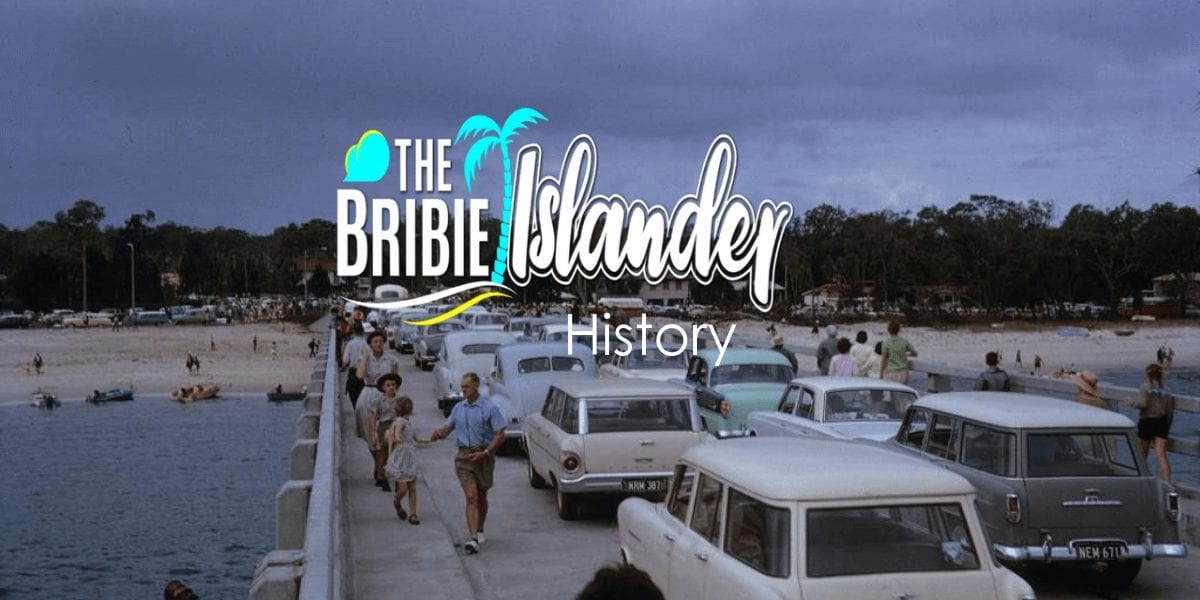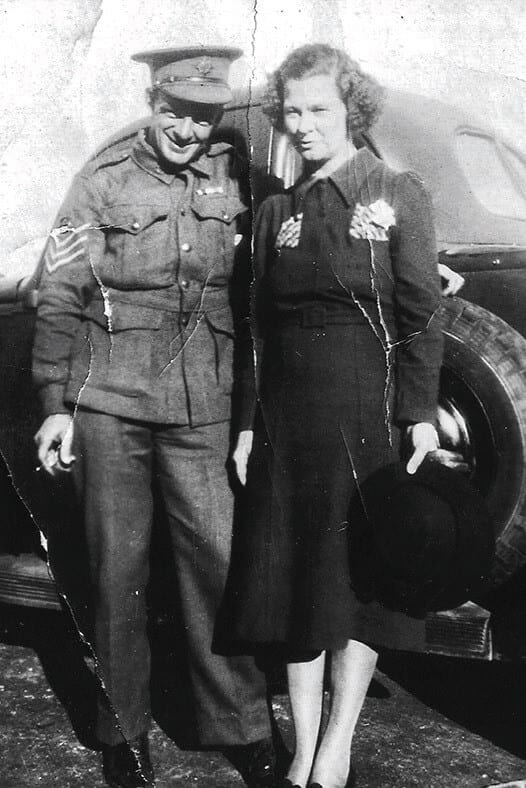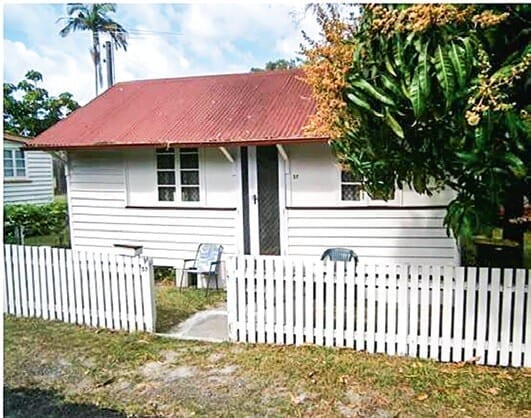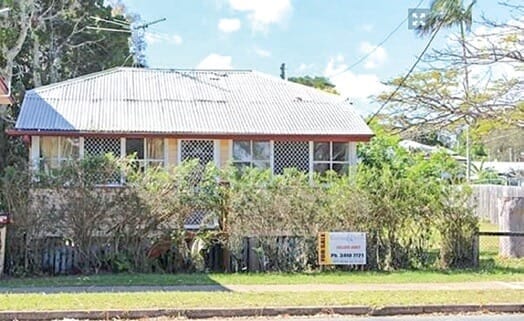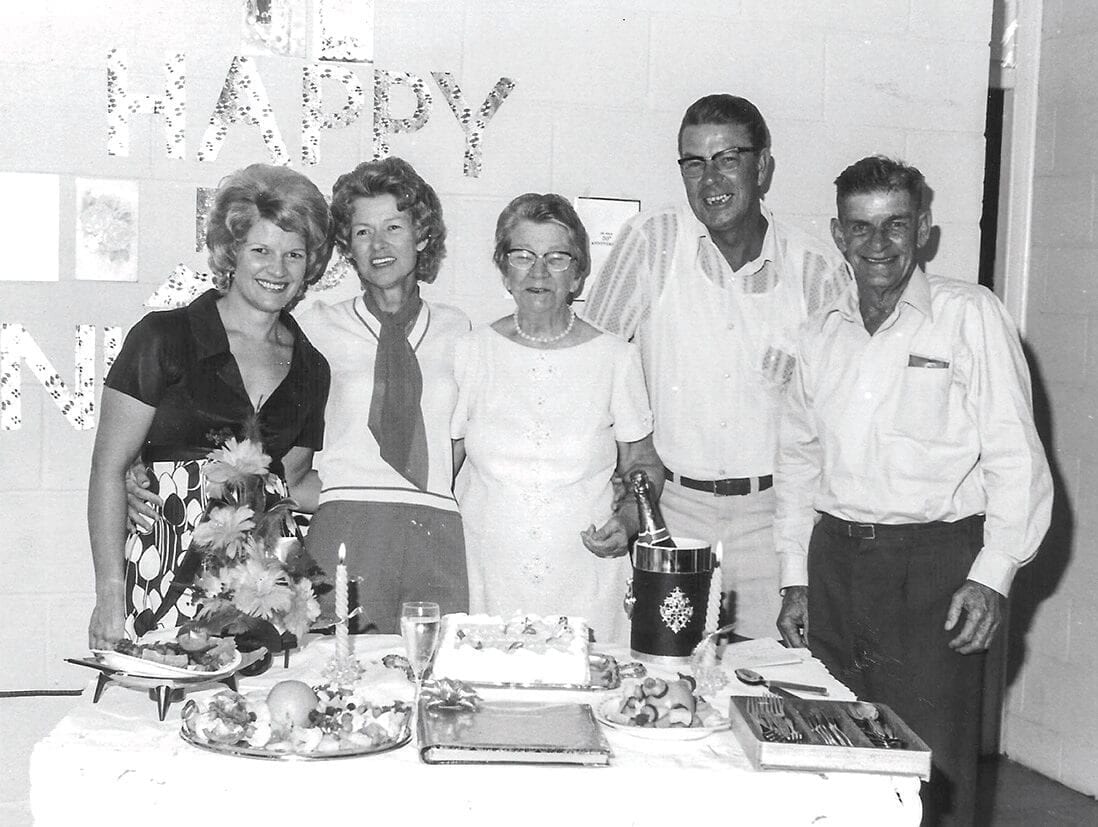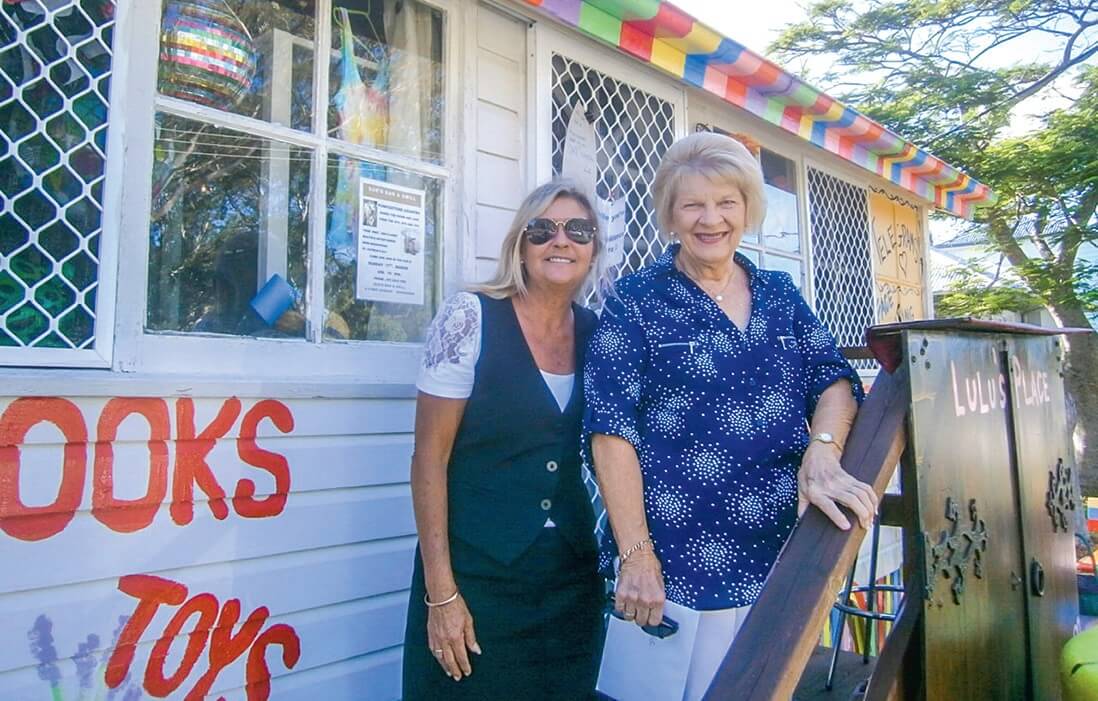Tags: History. Historical buildings. Bribie Island. Moreton Bay. Brisbane. Queensland. Australian.
In the last two issues of this magazine, you may have read the story of Ron Patterson, who first came to Bribie in 1910, and lived here in the early 1920s. It was during that time, living a tough life as a fisherman on Bribie, that he met the young Ivy Kettlewell whose family had built a holiday cottage on Bribie.
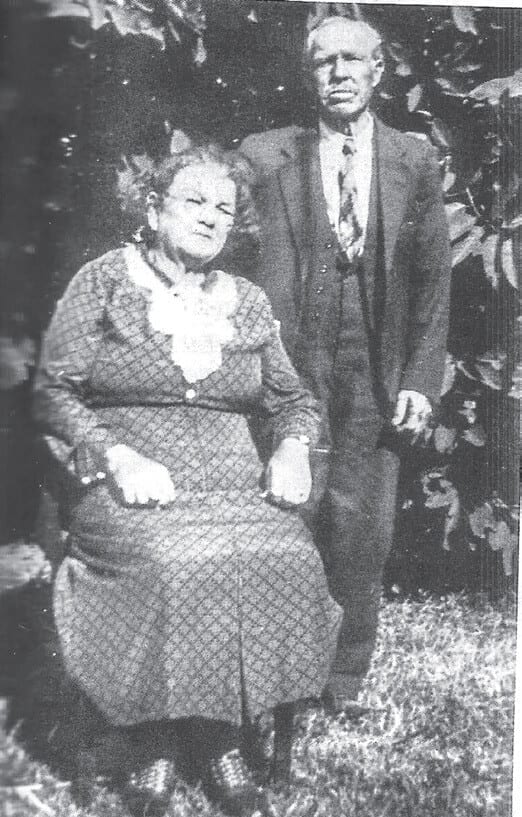
Thomas & Margaret Kettlewell – Lighthouse of Tragedy book
Despite Ron’s rough appearance, and always stinking of fish, he met Ivy at a Dance in the only Hall on Bribie at that time, and eventually they married in 1926. This week I met up with Ron Patterson’s daughter Estelle (nee Patterson) Rashleigh, and heard about her mother’s side of the family. The Kettlewell family history is even more intriguing and provides an interesting link to James Cook discovery and charting of the East coast of Australia back in 1770.
After Cook’s first landing at Botany Bay, he sailed the “Endeavour” north along the coast naming several points, including Cape Morton and the Glasshouses, before a brief stop to get water at the place now called 1770. It was here that Cook, accompanied by Joseph Banks, Dr. Solander and a party of men went ashore and enjoyed the best meal they had eaten since leaving England. He wrote in his log…
“Upon the shore we saw a species of the Bustard, one of which we shot, it was as large as a Turkey, We all agreed that this was the best bird we had eaten since we left England, and in honour of this we called the inlet Bustard Bay”.
This rugged headland and rocks were very treacherous for all early sailors, including Matthew Flinders who sailed “Investigator” past there in 1802 on the first circumnavigation of Australia.
BUSTARD HEAD LIGHTHOUSE
Over the next 60 years, many ships came to grief on this rocky headland. In 1867 a prefabricated iron Lighthouse was built in England and shipped out to be erected on Bustard Head. Access to the proposed location for the Lighthouse was very difficult and bringing materials, men, and equipment to construct it was very challenging. However, when complete and operational from 1868 it prevented many further disasters.
There were just a few pioneer settlers who came to live, farm and fish in this rugged part of the Australian coast over the next few years. Oyster leases were operated by the Moreton Bay Oyster Co. and the large “Turkey Station” cattle property was established. Thomas and Margaret Kettlewell were living with their three young children in Maryborough in 1899 when they decided to move to Pancake Creek, within sight of the lighthouse, where Thomas would be employed as a fencing contractor on “Turkey” cattle station.
Here they built a slab hut, opposite a boat shed at Pancake Creek, and lived in this very isolated location with their first three young children. In his spare time, Thomas Kettlewell shot many Kangaroos for their skins, which they tanned. Every few weeks Margaret and her six-year-old son Albert would travel the long rough dirt track to Gladstone by horse and cart to sell the tanned skins, the round trip taking about a week. Life was very challenging in those days.
WHOLE FAMILY POISONED
Thomas and Margaret produced a further three children while living at Pancake Creek and eventually had eleven children. One night while the family huddled together in the slab hut, some tanning liquid which had been left on the shelf above the food, leaked into the oats. Next morning after breakfast of porridge the whole family became violently ill. Margaret managed to attract the attention of the lighthouse keeper, on the headland 3 kilometres away, by flashing a mirror into the sun.
The relief lighthouse keeper at the time was a Tripcony, and he and his wife eventually climbed down the headland and rowed across the two-kilometre wide Pancake Creek to find out what was wrong. The whole family was very sick. The wife stayed with the Kettlewell family, Mum and Dad and three children, and eventually was able to nurse all five of them back to good health. They went on to have three more children while living in the hut at Pancake Point.
The family returned to Maryborough after 7 tough years in 1906, but their name is still remembered in a reef along the ocean beach, known today as “The Kettlewells”. One of the children born there was Ivy Kettlewell, who twenty years later would meet and marry Ron Patterson on Bribie Island.
Ron & Ivy Patterson- Redbank Army c 1941
BRIBIE ISLAND 1920’s
The Kettlewell family eventually moved to live in Brisbane and in early 1920 purchased a half acre of land in Toorbul Street, Bongaree, Bribie Island. This was just a few years after the first land was made available on Bribie Island, the Tug Company had leased land at Bongaree and built a Jetty for regular trips by the Steamship Koopa. Thomas Kettlewell built two small cottages on this land, and one still remains at No 37 Toorbul Street. These were the holiday homes for the large family of 11 children who came regularly to Bribie for holidays.
Thomas and Margaret Kettlewell owned two shops at West End in Brisbane and every weekend would close the shops, load up the children and dog “Royal”, board the Koopa and escape to beautiful Bribie. The dog “Royal” was a favourite of the ship’s captain Johnston and all the crew. As the family grew up and started to marry and expand, the houses were no longer able to accommodate them all, but they would all still come and bring tents and camp in the nearby area of Brennan Park.
In those days there were hundreds of holidaymakers camping on the island, and just a few residents, but dances were held in the Hall and singalongs by the Jetty, and someone would always have a musical instrument. It was all good clean fun, houses could always be left open and unlocked just a couple of shops for basic provisions, and plenty of great fishing. It was at one of these dances in 1923 that the 18-year-old Ivy Kettlewell met local fisherman Ron Patterson.
They fell in love and were married in 1926 in Brisbane. Ivy had had a dramatic start to life having been born in a remote slab hut near the Bustard Head lighthouse. Ron and Ivy Patterson eventually had three children, and it was the youngest of these, Estelle, that I met last week here on Bribie.
Kettlewell family- 1976 (L to R) Estelle, Beryl, Ivy (Mum), Ray, Ron.
FAMILY HOLIDAYS ON BRIBIE
Her brother Ray was born in 1926, her sister Beryl, always known as Tamy, was born in 1928. Her father Ron had endured the great depression and reenlisted in WW2. Estelle was born in 1943 and her Mum liked to remind her that she was an unplanned pleasant surprise when Ron was home on leave. Her sister was 15 years older. Coming to Bribie on the Koopa after the War were wonderful memories for Estelle.
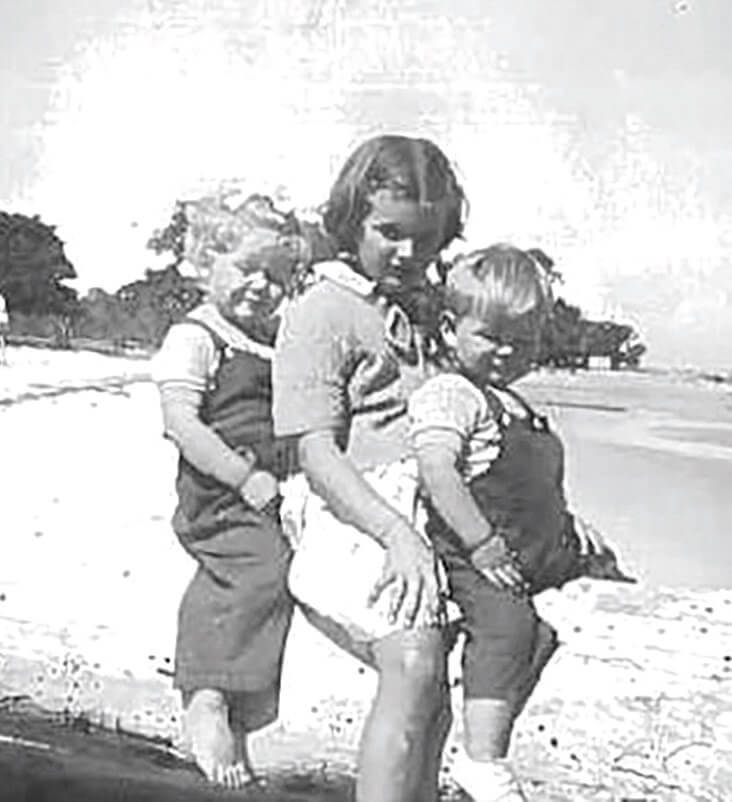
Estelle with nieces on Bribie 1952
Watching the men shovel coal into the boilers, the first sight of great sandy beaches, fishing off the Jetty and her sister singing with the Norman Llewelyn Band on the Koopa at weekends. Her grandfather Thomas Kettlewell died in 1941 before she was born, and Grandma then sold the two cottages on Bribie in 1947 for 400 pounds. Her father Ron Patterson worked several jobs over the years, but when he retired in 1967 he returned to live in Kangaroo Avenue on Bribie.
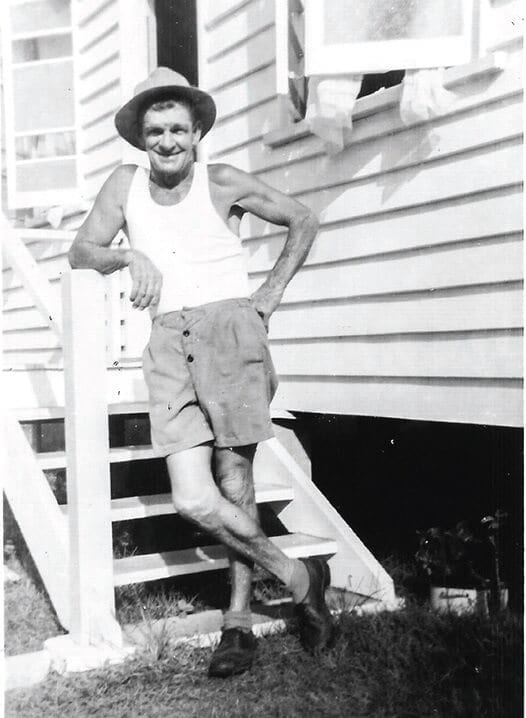
Ron Patterson retired to Bribie 1967
Estelle married a jockey and they lived in many places around Australia, including Sydney, Brisbane, and Cairns but following his bad accident and their failed marriage she returned to live on Bribie in 1982 to be with her father, brother, and sister and their families. She worked at the RSL Club and at the Bellara Motel, which is now the Bellara shopping centre. Her father Ron died in 1984, just two years after he wrote his wonderful memories of early Bribie which were told in previous articles.
Estelle Rashleigh has had an interesting life, spending many years traveling around Australia in her campervan, returning from time to time to Bribie where she lives now. When I met Estelle this week we visited the Kettlewell family original cottage at 37 Toorbul Street, built by her Grandfather 100 years ago, and where she spent many happy holidays in her very early years. The cottage is now occupied by Lulu Drew and is the colourful location for her “Party” business.
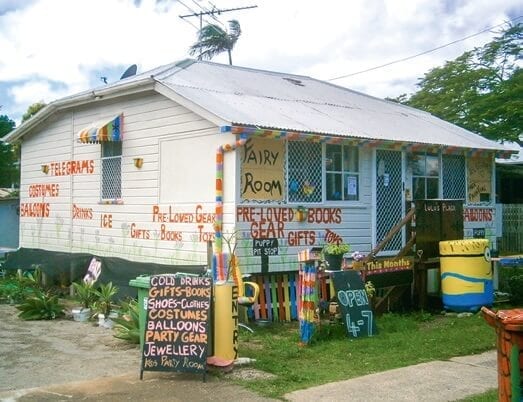
Lulus Party cottage 37 Toorbul Street, today
Estelle was shown around the cottage by Lulu and talked about the memories of her family all those years ago. Over coffee, Estelle showed me some family photos which I have included in this article. It was a wonderful and fitting way to finalise the story of the Kettlewell and Patterson families, who are so much a part of Bribie Island History.
Lulu & Estelle Rashleigh
MORE LOCAL HISTORY
The Historical Society has monthly public meetings at the RSL Club on the second Wednesday of each month commencing at 6:30 pm with interesting guest speakers on a wide range of topics, and you can see many more photos and articles on our Blog Site at http://bribieislandhistory.blogspot.com or contact us on [email protected].
